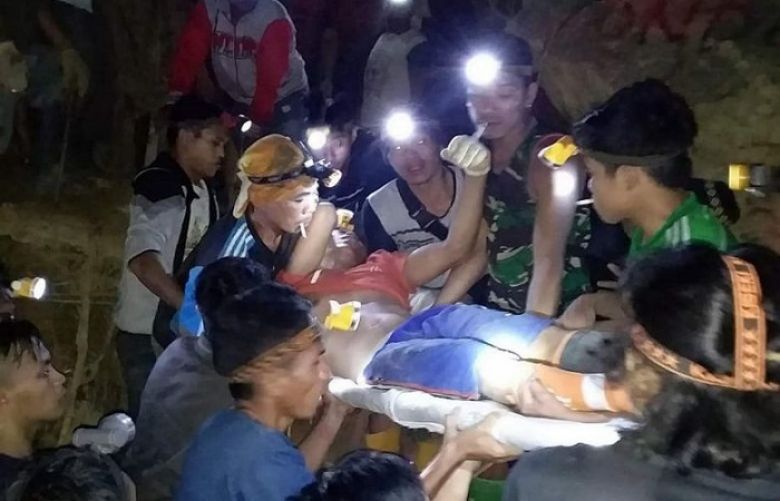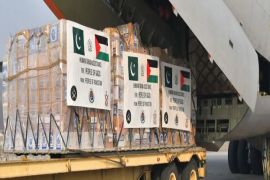Indonesian officials said on Wednesday dozens of rescuers were using spades and ropes to dig out around 45 people who were feared buried by the collapse of an illegal gold mine on the island of Sulawesi that killed at least one person.
Rescuers said they could hear the voices of some of those trapped in makeshift mining shafts in a muddy hillside in the Bolaang Mongondow area of North Sulawesi province and believed many were still alive.
“We are able to detect that many of them are still alive because we can hear their voices, as there are some places where air is getting in and out and there are gaps in the mud,” Abdul Muin Paputungan of Indonesia’s disaster agency said by phone.
Indonesia’s disaster mitigation agency said one body had been recovered by 8 a.m on Wednesday (0100 GMT) after the mine collapsed the previous evening. Indonesian media reports put the death toll at three.
The Indonesian government has banned such small-scale gold mining, although regional authorities often turn a blind eye to the practice in more remote areas. With little regulation, such mines are prone to accidents.
Search-and-rescue teams and military officers were working together but using simple tools such as spades and ropes because conditions remained dangerous, with the land still prone to shifting and sliding, Paputungan said.
He said the families of victims had started gathering at the mine site to wait for news.
Photos released by the disaster agency showed rescue workers and villagers on a muddy hillside scrambling to pull out survivors and carry them away on stretchers during the night.
Disaster agency spokesman Sutopo Purwo Nugroho said dozens of people had been mining for gold when beams and support boards broke suddenly.
“Evacuation efforts continued through the night because of the number of people estimated to be buried,” he said.
The issue of mining safety was thrust back into global prominence this year after a dam in Brazil holding back mining waste burst, killing more than 300 people.
Resource-rich Indonesia has a patchy record on mining safety, particularly small-scale unlicensed mines. At least five people were killed in the same part of Sulawesi last year after an illegal mine collapsed during heavy rain.
The area is also home to a gold mine operated by PT J Resources Asia Pasifik, where production began in 2013.
Agung Pribadi, a spokesman for Indonesia’s mining ministry, said by phone three mining inspectors had been sent to assist in the rescue and that illegal mines had recently been shut in the area.
“Maybe now they have started again,” he said.
Gatot Sugiharto, who heads a group called the Citizens Mining Association, estimated there were about 200 similar unlicensed mines around Indonesia, with 10 in that area of Sulawesi alone.
He said such mines operated in a gray area, with authorities reluctant to give them permits because it would mean official supervision and attention to safety.
Sugiharto estimated that an experienced miner might be able to survive for up to three or four days under the rubble if they could find air pockets and were not crushed by rocks.
“They can breath slowly and usually they don’t panic. If there is no poisonous gas they can survive for some time,” he said.







